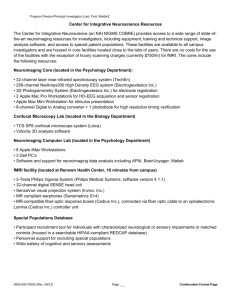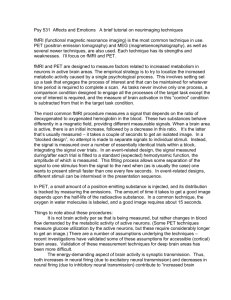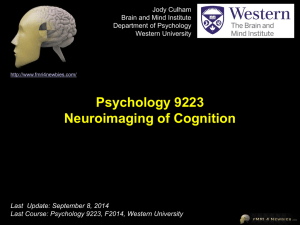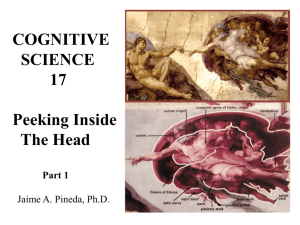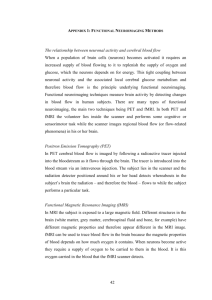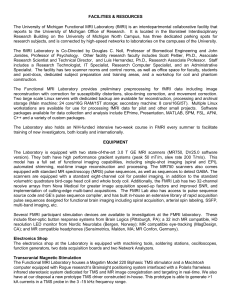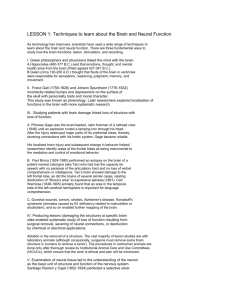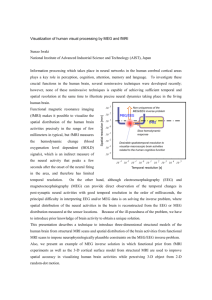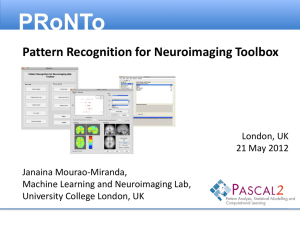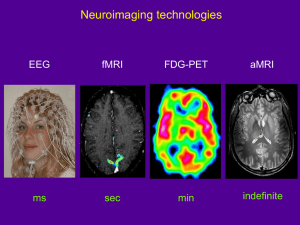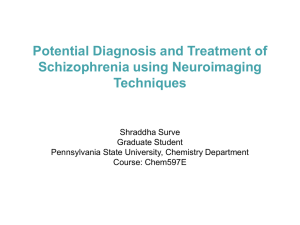Chapter 5: Brain imaging Multiple Choice Questions (1
advertisement
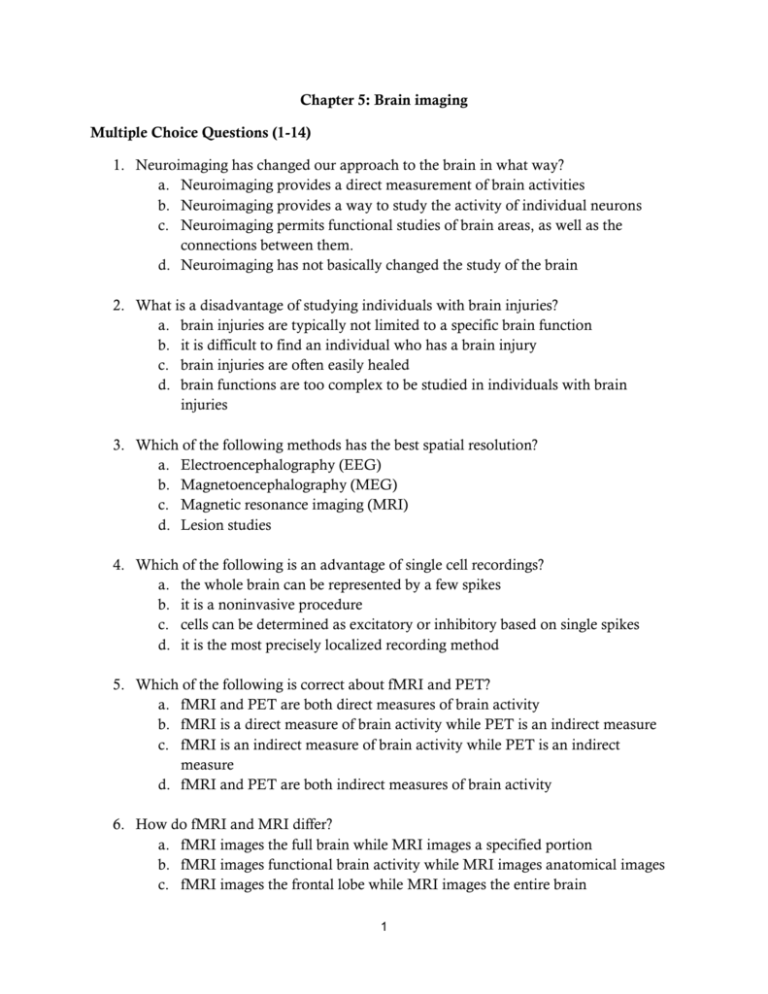
Chapter 5: Brain imaging Multiple Choice Questions (1-14) 1. Neuroimaging has changed our approach to the brain in what way? a. Neuroimaging provides a direct measurement of brain activities b. Neuroimaging provides a way to study the activity of individual neurons c. Neuroimaging permits functional studies of brain areas, as well as the connections between them. d. Neuroimaging has not basically changed the study of the brain 2. What is a disadvantage of studying individuals with brain injuries? a. brain injuries are typically not limited to a specific brain function b. it is difficult to find an individual who has a brain injury c. brain injuries are often easily healed d. brain functions are too complex to be studied in individuals with brain injuries 3. Which of the following methods has the best spatial resolution? a. Electroencephalography (EEG) b. Magnetoencephalography (MEG) c. Magnetic resonance imaging (MRI) d. Lesion studies 4. Which of the following is an advantage of single cell recordings? a. the whole brain can be represented by a few spikes b. it is a noninvasive procedure c. cells can be determined as excitatory or inhibitory based on single spikes d. it is the most precisely localized recording method 5. Which of the following is correct about fMRI and PET? a. fMRI and PET are both direct measures of brain activity b. fMRI is a direct measure of brain activity while PET is an indirect measure c. fMRI is an indirect measure of brain activity while PET is an indirect measure d. fMRI and PET are both indirect measures of brain activity 6. How do fMRI and MRI differ? a. fMRI images the full brain while MRI images a specified portion b. fMRI images functional brain activity while MRI images anatomical images c. fMRI images the frontal lobe while MRI images the entire brain 1 d. fMRI images the final development of the brain, while MRI images developing brain 7. Dr. Jones has just reported the results of one fMRI experiment where he showed that in 5 adults (4 men, 1 woman) the right frontal lobe is more active for even numbers and the left frontal lobe is more active for odd numbers. He has concluded that the right frontal region is the ‘even number center’ in the brain and the left frontal region is the ‘odd number center’. What are potential problems with his position? a. There may be other explanations for why the right and left areas were differently active b. A study with just 5 subjects may not be enough to clarify differences in brain responses c. While the brain activity correlated with even and odd numbers, it is impossible to tell from this study whether that brain response was caused by number type d. All of the above 8. What is the key principle of BOLD fMRI? a. active brain areas consume oxygen b. communication between distinct hemispheres occurs c. cortical regions interact in a feedforward manner d. some cortical neurons have myelinated axons 9. What is a concern when using an experimental design that compares an “active” stage to one at “rest”? a. if a person is unable to sleep, it is impossible to achieve a resting state b. individuals that exercise regularly will have less difficulty in the “active” requirements c. the brain is not truly “at rest” in the absence of an experimental task, since people are likely to be thinking of other things d. what one person considers to be active, another may regard as restful 10. Methods such as tell researchers precisely where activity is happening while the methods of reflect more precisely when it is happening. a. EEG and MEG, MRI and PET b. EEG and MRI, MEG and PET c. MRI and PET, EEG and MEG d. MEG and PET, EEG and MRI 2 11. In neuroimaging studies, the term ‘regions of interest’ refers to a. sensory regions in the brain that are the focus of study in a particular experiment b. brain activity in the cerebral cortex c. brain areas that are targeted for study in a particular experiment d. brain areas that have been damaged due to stroke or illness 12. You are designing a brain imaging study to investigate language processing in the brain. You decide to have your subjects listen to human speech and then compare their brain response to two other conditions: (1) listening to orchestral music, and (2) silence. Which of the following is likely true about your study? a. You use a subtractive method to compare brain responses in the speech, music, and silence conditions b. You will not be able to control what your subjects are thinking about in the silence condition c. It may be difficult to interpret differences between the silence and the music conditions d. All of the above 13. A key benefit of the advent of brain imaging techniques is that they allow us to a. investigate causational, relationships between cognitive processes and brain activity b. investigate aspects of cognition that were previously impossible to observe directly, such as brain areas that are active for seen versus imagined stimuli c. record direct signals of neural activity for differing kinds of stimuli d. all of the above 14. A key difference between lesion studies and neuroimaging studies is that a. lesion studies include patients with brain damage b. neuroimaging studies consist of individuals without brain damage c. it is often difficult to know the precise locations that are impaired in patients with brain lesions d. neuroimaging studies have ‘regions of interest’ identified prior to the experiment Short Answer Questions (1-2) 1. What problem(s) might arise when brain activity in a cognitive task is compared to a resting baseline? 3 2. If you were interested in the time course of brain activity during a brief task that used a brief (100 ms) stimulus presentation and a rapid response by the subject (<500 ms), what neuroimaging technique would be best? Explain why the technique you chose is best suited for this type of experiment. 4
